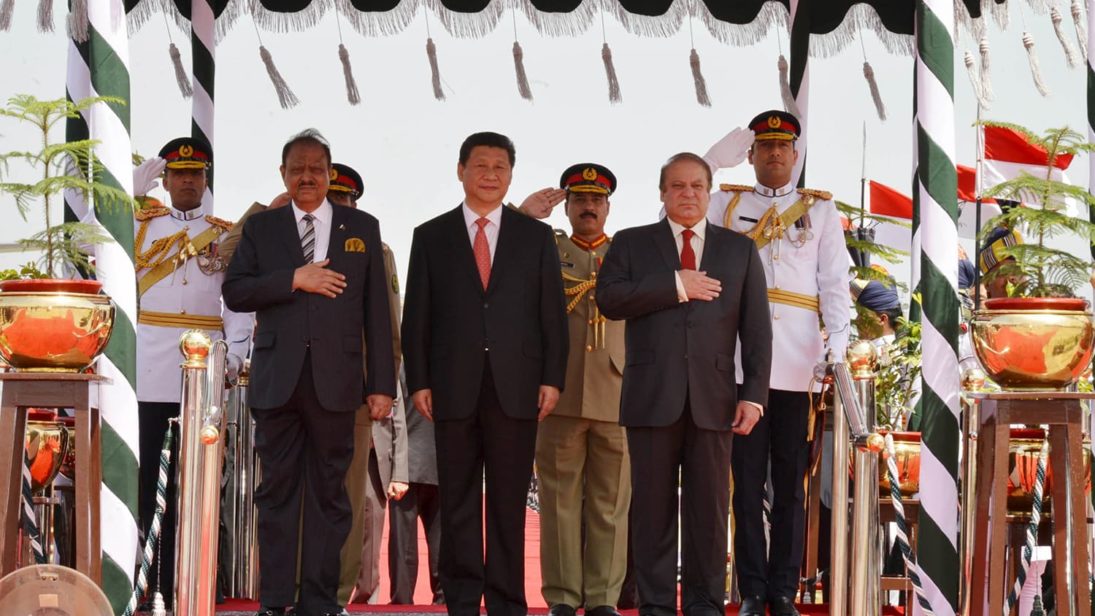
Key strategic choices are bound to afflict Pakistani foreign policy as America’s rebalancing strategy in the Asia-Pacific takes shape against what the world’s foremost power believes is a rising and assertive China. As fault lines between the two global powers widen, Pakistan seems destined to encounter trouble in placing itself between the two superpowers that have been the central focus of its foreign policy. What should Pakistan’s alliance pattern be? Should the Pakistani state place itself firmly within the Chinese camp, or should it side with the United States, its erstwhile ally? Or is it better off pursuing a “hedging” strategy that entails not taking sides between the two contending powers? In order to answer these questions, Pakistan’s relations with both China and the United States need to be assessed and put in context.
When Chinese President Liu Shao-Chi visited Pakistan in the 1960s, he described their relations as friendship in righteous struggle (mujahidana dosti).[i] This spirit of Third World solidarity hinged on both countries’ status as developing countries and superseded their respective economic ideologies. It is true that communism was seen as antithetical to the social and religious values of the Pakistani state and society. That being said, communism of the Soviet variety was perceived as a far more potent threat, partially explaining Islamabad’s willingness to cooperate with Beijing on strategic imperatives.
Interestingly, Chinese hegemony in Pakistan is seen far more favorably compared to the United States, and is evident in the euphoria generated by the China-Pakistan Economic Corridor (CPEC). Political parties have endorsed CPEC as a lifeline for the Pakistani state, particularly its economic vitality, with critical debate over whether CPEC would bring equal benefits to all provinces or only the predominant Punjab province. With no questions attached to Chinese intentions, the state elites have been particularly appreciative of Chinese investment, demonstrated by Senator Mushahid Hussain Syed asserting that, “China treats us a friend, an ally, a partner and above all, an equal—not how the Americans and others do.”
This narrative stands in stark contrast to that of the United States. The United States, for example, failed to come to Pakistan’s side during the 1965 war. It also displayed serious opposition, and still does, to Pakistan’s nuclear weapons program. The Pressler Amendment was invoked as soon as the Russians left Afghanistan, and Pakistan was no longer needed as a frontline state. But come 9/11, the Americans once again rushed to Pakistan to help them deal with the threat of Al-Qaeda and the Taliban. Even during the War on Terror, relations between the United States and Pakistan have remained cool and frosty at most times. Pakistani state elites contend that despite their sincere efforts to defeat extremism, losing the lives of 80,000 Pakistanis in the process (with civilians making up more than half of the casualties), Washington still wants Islamabad to do more.
On the contrary, China has stood by Pakistan even when relations were presumably sour—such as when Chinese engineers were kidnapped or killed in Balochistan and Khyber Pakhtunkhwa, or even when alleged linkage between Uighur separatists in Xinjiang belonging to the East Turkestan Islamic Movement and militants in the FATA region was found. Whereas the Americans have made public statements condemning Pakistan for its alleged role in terrorist attacks in Afghanistan, the Chinese have refrained from doing so and used official and private diplomatic channels to ensure their interests were respected.[ii] Second, with the CPEC project, Chinese investments in Pakistan are growing while the obverse is true for the United States, which is withdrawing investments.
Is China a safer bet then? More crucially, as the Chinese-American conflict in the Asia-Pacific intensifies and assumes the shape of a global rivalry, how should Pakistan choose its alignment pattern in the future?
China, bringing in much-needed investment, has taken the lead in optimizing the perceived fulfilment for Pakistani ruling elites (as well as the public) of catering to Pakistan’s economic frailties. However, a strategic alignment with China at the cost of a relationship with the United States carries grave security risks. Considering that Pakistani political culture is very much oriented to the West, the United States, as a valuable and powerful player in international politics, may not be as easily discarded by the Pakistani state and society. Furthermore, in a competitive and anarchic global environment, global powers as self-seeking rational actors pursuing policies that are rarely altruistic. Therefore, CPEC should be critically viewed as such, and not as a magic potion that will cure all of Pakistan’s socio-economic ills.
Pakistan’s options in a coming global conflict are better shaped by a strategy that optimizes its national interests through a definition of threat perceptions that are not antagonistic to either China or the United States. This hedging, that is firmly placing itself between the two superpowers, provides a more credible security guarantee and survival strategy than aligning with one against the other.
[i] Abdul Sattar, Pakistan’s Foreign Policy, 1947-2005: A Concise History (Karachi: Oxford University Press, 2007), p. 105[ii] Mathieu Duchatel, ‘The Terrorist Risk and China’s Policy toward Pakistan: Strategic Reassurance and the ‘United Front’, Journal of Contemporary China, 20:71, 2011: 543-561.***
Image: Anadolu Agency, Getty